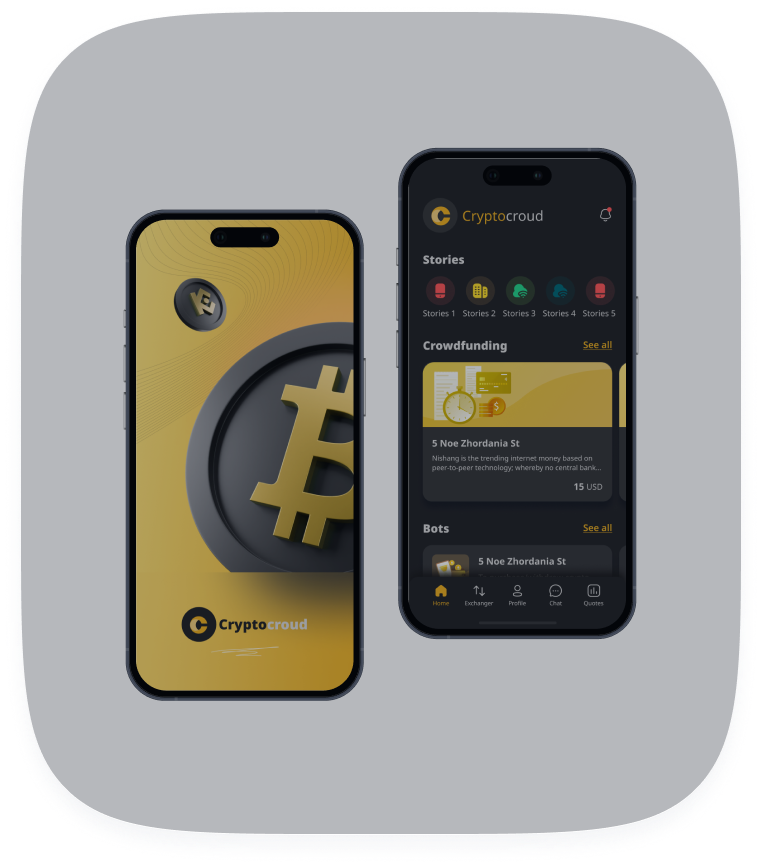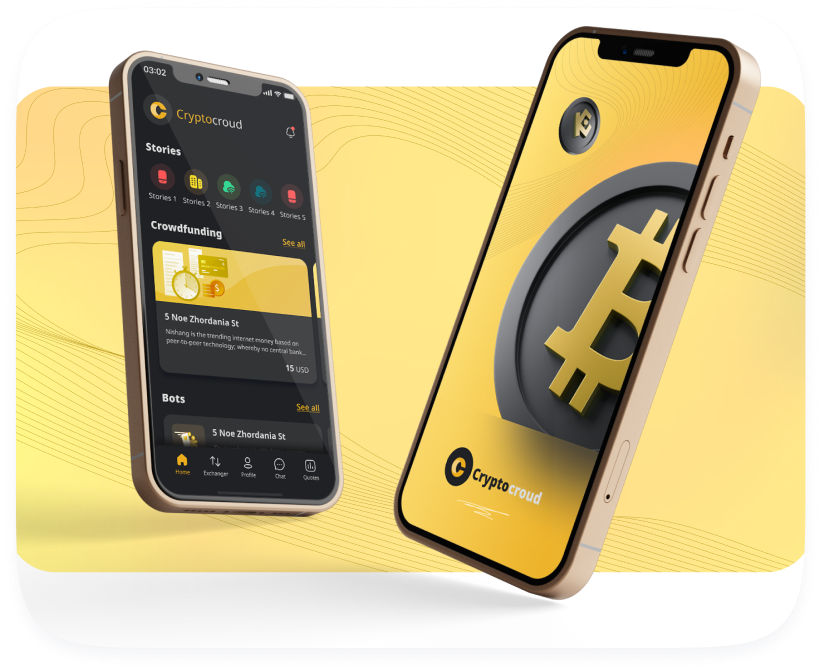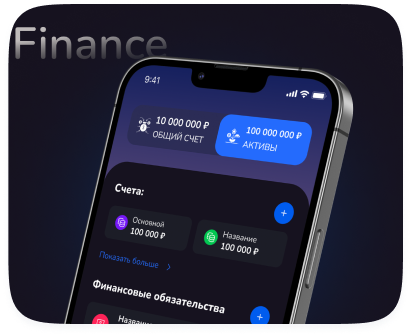
We build mobile apps





We work directly with every client
We deliver solutions with guaranteed results.

We build mobile apps






















It’s similar to buying a car at a dealership: you can go with the basic model, or choose a fully loaded version — it all depends on your needs and goals.

How to create YOUR OWN ChatGPT?

How to PROPERLY create a mobile app in 2024 | Step by step

You pay > We work > You receive the results. If you’re satisfied, you pay the next installment.
We need to have a call and discuss your specific requirements.
One thing we can say for sure: projects under 500,000 rubles are not feasible — we can’t deliver the required quality for less.
We launch, gather user feedback, and add new features that help you earn more from the app.
During development, I always design the architecture to make future updates and improvements easy and convenient.
Some apps perform better with influencer marketing, others through ad networks, and sometimes it’s even effective to buy a contact list and set up retargeting 😊
It all depends on your project’s specifics and is discussed personally.
How we can help:
- Set up ASO (App Store Optimization) and create an attractive app store page to drive free, organic installs.
- Help you develop the right promotion strategy tailored to your app.
- Share contacts of advertising experts I personally work with.
Спросить ChatGPT
The only ongoing cost is paying for the server (hosting).
You pay a subscription fee for the server. The more users your app has, the more server resources it consumes, and the higher the hosting costs.
At the early stages, when you have few users, the server will be FREE.
After that, the cost will gradually increase, but it remains affordable.
For example, an app with 100,000 users spent about $150 per month on hosting.
Marketplace App Development: Build Your P2P Platform
Develop your own thriving marketplace application and connect buyers and sellers seamlessly. This guide covers everything from essential features to the development process and beyond.
Introduction
In today's digital age, marketplace apps are booming. They provide a convenient platform for connecting buyers and sellers, fostering a dynamic peer-to-peer (P2P) economy. From buying and selling used goods to offering freelance services, marketplace apps are transforming the way people interact and transact. This article dives deep into the world of marketplace app development, covering the key considerations, technologies, and strategies needed to build a successful P2P platform.
Understanding the Marketplace App Landscape
Before diving into the development process, it’s essential to understand the different types of marketplace apps and identify your target audience. Understanding user needs and the competitive landscape is paramount to building a successful product.
Types of Marketplace Apps
- E-commerce Marketplaces: These platforms facilitate the sale of physical goods, like eBay and Etsy. They often require robust inventory management, shipping integrations, and payment processing capabilities.
- Service Marketplaces: These platforms connect users with service providers, such as TaskRabbit or Upwork. Key features include profile management, ratings and reviews, and secure payment gateways.
- Rental Marketplaces: These platforms enable users to rent out items or properties, like Airbnb. Trust and safety features, such as identity verification and insurance options, are crucial for these types of marketplaces.
- Classifieds Marketplaces: Platforms similar to Craigslist, focused on local listings and direct contact between buyers and sellers. Moderation and security are critical.
Identifying Your Target Audience
Who are you building this app for? What are their needs and pain points? Understanding your target audience will drive crucial decisions about features, design, and marketing.
Key Features of a Successful Marketplace App
A successful marketplace app should offer a seamless and user-friendly experience. The core features will vary depending on the specific type of marketplace, but some common elements are essential.
User Profiles
Allowing users to create detailed profiles with information about themselves, their products, or services is crucial. This builds trust and allows for better matching between buyers and sellers. Important aspects include:
- Profile creation and management
- User verification (email, phone, social media)
- Profile pictures and descriptions
- Display of ratings and reviews
Search and Filtering
An efficient search function is vital for users to quickly find what they are looking for. Consider these features:
- Keyword search
- Advanced filtering options (price, location, category, etc.)
- Sorting options (relevance, price, date, etc.)
Product/Service Listings
The way items or services are presented is vital for attracting buyers. Key elements include:
- High-quality images and videos
- Detailed descriptions
- Pricing information
- Availability and quantity (if applicable)
- Clear terms and conditions
Communication Tools
Facilitating direct communication between buyers and sellers is essential for negotiation and resolving queries. Consider:
- In-app messaging
- Notifications (push notifications, email alerts)
- Review and rating systems
Payment Gateway Integration
Secure and reliable payment processing is a must. Consider integrating with popular payment gateways such as:
- Stripe
- PayPal
- Braintree
- Other local payment options
Order Management
For marketplaces involving transactions, robust order management is vital. This includes features like:
- Order tracking
- Shipping options
- Refund processing
- Dispute resolution
Reviews and Ratings
Building trust and providing social proof are key. Include features for:
- Users to rate and review sellers/buyers or service providers
- Moderation of reviews to prevent abuse
- Displaying average ratings prominently
Location Services
For local marketplaces, location-based features are critical. This includes:
- Geolocation for finding nearby products or services
- Map integration
- Distance filtering
Security and Trust Features
Protecting users and preventing fraud is paramount. Implement features like:
- Identity verification
- Secure payment processing
- Fraud detection mechanisms
- Reporting mechanisms for suspicious activity
Choosing the Right Technology Stack
Selecting the right technology stack is crucial for the performance, scalability, and maintainability of your marketplace app. Consider these factors:
Platform (iOS, Android, or Both)
Will you focus on a single platform initially, or build for both iOS and Android simultaneously? Native development offers optimal performance, while cross-platform frameworks can reduce development time and cost.
Programming Languages
Common choices include:
- Native iOS: Swift or Objective-C
- Native Android: Kotlin or Java
- Cross-Platform: React Native, Flutter, Xamarin
Backend Frameworks
These frameworks handle the server-side logic and data management. Common choices include:
- Node.js with Express.js
- Python with Django or Flask
- Ruby on Rails
- PHP with Laravel
Databases
Choose a database that can handle the expected data volume and transaction load. Options include:
- PostgreSQL
- MySQL
- MongoDB
- Firebase (for real-time data)
Cloud Hosting
Cloud platforms provide the infrastructure needed to host your app and scale as your user base grows. Common options include:
- Amazon Web Services (AWS)
- Google Cloud Platform (GCP)
- Microsoft Azure
APIs and Integrations
Consider using APIs for:
- Payment processing (Stripe, PayPal)
- Mapping (Google Maps, Mapbox)
- Notifications (Firebase Cloud Messaging, Twilio)
- Social media login (Facebook, Google, Twitter)
The Marketplace App Development Process
Developing a marketplace app involves a structured process to ensure quality and efficiency.
1. Planning and Discovery
This is the foundational stage. You need to clearly define:
- Business goals
- Target audience
- Key features
- Monetization strategy
- Competitive analysis
2. Design (UI/UX)
Create wireframes and mockups to visualize the app's user interface and user experience. Focus on creating a seamless and intuitive experience.
3. Development
This is where the actual coding takes place. Divide the development into sprints and use agile methodologies to ensure flexibility and adaptability. Prioritize core features first and then iterate based on user feedback.
4. Testing
Thorough testing is crucial to identify and fix bugs before launch. This includes:
- Unit testing
- Integration testing
- User acceptance testing (UAT)
5. Deployment
Deploy the app to the app stores (Google Play Store and Apple App Store). Follow the guidelines carefully to ensure approval.
6. Marketing and Promotion
Launch a marketing campaign to promote your app and attract users. Utilize social media, app store optimization (ASO), and paid advertising.
7. Maintenance and Updates
Regularly maintain and update your app to fix bugs, improve performance, and add new features based on user feedback and market trends.
Monetization Strategies for Marketplace Apps
How will your marketplace app generate revenue? Several monetization strategies can be used:
Commission Fees
Charge a percentage of each transaction made on the platform. This is a common and straightforward approach.
Listing Fees
Charge users a fee to list their products or services on the marketplace.
Subscription Fees
Offer premium features or benefits for a recurring subscription fee.
Featured Listings
Allow users to pay to have their listings featured prominently on the platform.
Advertising
Display ads to users on the platform. This can be intrusive if not implemented carefully.
Data Monetization
Anonymized and aggregated user data can be valuable to third parties. Be transparent with users about data collection practices.
Cost Considerations for Marketplace App Development
The cost of developing a marketplace app can vary widely depending on several factors:
App Complexity
More complex features and functionalities will increase development costs.
Platform
Developing for both iOS and Android will generally be more expensive than developing for a single platform.
Development Team
The size and location of your development team will impact costs. Hiring a dedicated team will likely be more expensive than outsourcing.
Design Complexity
A custom design will be more expensive than using a pre-built template.
Location of Development Team
Development costs can vary significantly based on the geographical location of the development team. Outsourcing to countries with lower labor costs can reduce expenses.
Generally, expect to spend anywhere from $50,000 to $500,000+ to develop a fully functional marketplace app. Creating an MVP (Minimum Viable Product) with core features can be a cost-effective way to test the market and gather user feedback before investing in full-scale development.
Challenges and Considerations
Building a successful marketplace app is not without its challenges. Some key considerations include:
Building Trust
Establishing trust between buyers and sellers is paramount. Implement robust verification and security measures.
Managing Supply and Demand
Ensuring a balance between supply and demand is crucial for marketplace success. Incentivize both buyers and sellers to participate actively.
Competition
The marketplace app landscape is competitive. Differentiate your app by offering unique features or targeting a niche market.
Regulatory Compliance
Ensure your app complies with all relevant regulations, including data privacy laws and consumer protection laws.
Scaling
Plan for scalability from the outset. Your app needs to be able to handle increasing user traffic and transaction volume.
Table: Comparison of Development Options
| Development Option | Pros | Cons | Cost |
|---|---|---|---|
| Native Development (iOS/Android) | Optimal performance, access to all device features | Higher cost, requires separate codebases for each platform | $$$ |
| Cross-Platform Development (React Native, Flutter) | Lower cost, single codebase for multiple platforms | Performance may be slightly lower than native, potential limitations in accessing certain device features | $$ |
| Low-Code/No-Code Platforms | Fast development, requires minimal coding experience | Limited customization options, may not be suitable for complex applications | $ |
| Outsourcing | Access to a wider pool of talent, potential cost savings | Communication challenges, potential quality control issues | Varies depending on location and expertise |
Conclusion
Marketplace app development presents a significant opportunity in today's digital economy. By understanding the key features, technologies, and strategies outlined in this article, you can increase your chances of building a successful P2P platform that connects buyers and sellers, fosters trust, and generates revenue. Remember to prioritize user experience, security, and scalability throughout the development process. The right marketplace app development strategy, combined with a strong value proposition, can position you for success in the competitive world of online marketplaces.






